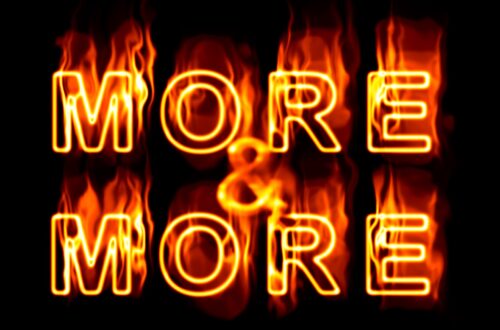
The Hero’s Journey: Garden of Eden/Plato’s Cave
In my last article, “Searching For My Purpose, (Here’s the link: Purpose). I laid out a three-part rendition of Joseph Campbell’s Hero’s Journey: Home Consciousness, the Departure and the Return.
Brief Review of Three Stages
Home Consciousness is the programming we grow up with. We get it from our parents, older siblings, other family members, friends, teachers, preachers, social/traditional media, culture and so forth. We are pretty much programmed at this stage of our life, and if we never question our programming we will stay this way our entire lives. We might think we are free thinking human beings, but in reality we are just responding to our subconscious programming.
The Departure Stage: However, an event in our lives or the wider world can occur that shakes us to our core, and we begin to question our programming. If we continue to question things, this can begin a journey into the heart of our soul. We might need to leave home to do this, but maybe not.
The Return Stage: When we have probed and searched enough, we begin to get a sense of a deeper Self lurking inside us. As we become more familiar with this, we deepen our sense of who we are and what our purpose is. Finally, after having searched for some time, we are ready to return home with a new sense of who we are and what our purpose is.
Returning home here doesn’t necessarily mean we literally return home, but more that we come back into the world ready to engage it for our own and the world’s benefit. Our growth is intimately connected to the evolution of the universe and society. If it is not, then we are on the wrong path.
In this article, I would like to take that three-part hero’s journey motif and apply it to two more stories: The Garden of Eden Story and Plato’s Allegory of the Cave. I will go through the three stages I outlined above and show how they apply to these two stories.
The Garden of Eden Story
Home Consciousness: The Garden of Eden story is told in the Book of Genesis, the first book of the Hebrew Bible/The Old Testament. It begins at the home stage with Adam and Eve in the garden.
Everything is perfect, except of course for the pesky snake who ends up causing all the trouble. It almost seems as if it was in the cards from the beginning. The All-Knowing God must have known that by putting that beautiful tree with its luscious fruit in the garden and then commanding Adam and Eve not to eat of it, he was asking a lot; especially when he put that “evil” snake in there to tempt them.
If he had wanted them to stay in the garden, why put the tree and the snake in there in the first place? The answer is God not only knew Adam and Eve would succumb to temptation, but he wanted them to do so because it was their path to growth and redemption.
The Departure Stage: So when they get kicked out of the garden that signifies their departure. God curses them by giving Eve the labor and pain of childbirth and Adam the toil and drudgery of work. This symbolizes the difficulty of the departure stage. It ain’t easy.
God even puts two angels with flaming swords at the gates of the garden to prevent them from returning. The way is forward into more misery, confusion, and chaos.
The Return Stage: This lasts until they rediscover “God” in their hearts—which for our purposes here means knowing their true selves and who they really are.
For a more detailed analysis please read: “The Garden of Eden: An Evolutionary Tale” at this link: Garden.
Plato’s Allegory of the Cave
Home Consciousness: The second example is Plato’s journey out of the cave. In this allegory, people are in a cave and chained to a seat unable to move their heads or bodies in any way. Behind them, in front of a big fire that they cannot see, figures are paraded, casting shadows on the cave wall in front of them.
The prisoners cannot see the figures; they just see their shadows and, since they know nothing else, they think these shadows are real and they discuss and debate them with their fellow prisoners. This is the home consciousness where one unquestionably sees what one is programmed to see.
The Departure Stage: Then someone, perhaps a teacher or a philosopher, Plato no doubt was thinking of his teacher Socrates, removes the chains from one of the prisoners.
What do these chains represent? They represent our programmed beliefs that keep us enslaved and in darkness. When someone removes them, it means that something or someone has compelled us to question our assumptions and beliefs.
So the prisoner turns around and sees the objects that are causing the shadows on the wall, and he becomes confused. He can’t immediately process this new information. In short, his mind is being blown. His teacher then pulls him up and out of the darkness of the cave and into the bright sunlight, which further blinds him so he can’t see anything.
This is the departure stage—the release from the chains and the climb out of the cave. As in the other example, there is confusion and difficulty. This symbolizes that when we give up one set of beliefs, we don’t automatically assume another set of beliefs. In fact, that is the last thing we want to do.
No, we have to go through a state of chaos and confusion where we no longer know what is right and wrong, up or down. We have to completely lose our bearings. It is a scary but necessary stage to go through. It is so frightening that most people don’t want to undertake such a journey, but if we’re going to discover our true selves and our purpose, we must take it. This is a period of intense searching.
The Return: Finally, after being outside the cave for a while, our eyes adjust to the light, and we begin to see things more clearly. As Plato says, finally we can see the sun and can contemplate it. We realize the sun is the source of all there is. Without it there would be nothing. This symbolizes ourselves getting in touch with the inner source of everything. When we get in touch with this, we discover who and what we are and what our purpose is.
Then Plato says we must return to the cave to try and liberate others no matter what the risk may be. This symbolizes the return.
The Hero’s Journey motif is present everywhere we look. We see it in ancient myths and modern stories be they on television, in books, or in the movies. The more we become aware of this motif, the more we see it.
It is then but a short journey to realize our own lives also embody the hero’s journey. It can manifest itself in big ways and small ways. It is always there and when we tune into it, our lives take on a greater intensity and meaning. It places our lives in a much bigger context.
To learn more about the magic of the universe: Click this link: The Magical Universe.
Image by 巻(Maki) from Pixabay




